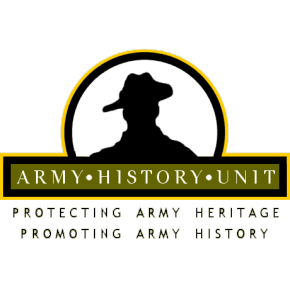Gary McKay is a former Australian Army officer who served as a platoon commander with the 4th Battalion, Royal Australian Regiment during the Vietnam War.

McKay fought and was seriously wounded in the battle of Nui Le. He was subsequently awarded the Military Cross for his gallantry in that action. McKay later served as Commanding Officer of the 8th/9th Battalion, Royal Australian Regiment and retired in 1995 after 30 years of service.
While posted to the Royal Military College, Duntroon as an instructor in the mid-1980’s, he was prompted to write In Good Company: One Man’s War in Vietnam—an autobiographical account of his service as a platoon commander in Vietnam—expressly for young cadets at RMC. In Good Company has also gone on to be a best seller in New Zealand and in the general readership in Australia and is still in print after nine re-prints today.
After the Blood Cools can be regarded as a sequel to In Good Company in that it provides a condensed version of McKay’s life up to and service in Vietnam (Book One at 81 pages long), and then outlines McKay’s life and experiences after his service in Vietnam to date (Book Two at 48 pages long). I enjoyed this part of the book as McKay writes in a laconic and easy to understand way and his story is certainly worth listening to.
The autobiographical part of this book comprises all but 19 pages of the text. The sub-heading—“A Warrior’s Dilemma”—and penultimate chapter title “Dilemma” point to the less autobiographical aspect of the book. In that chapter McKay examines the role of warriors, the face of battle and a range of challenges (fear, fatigue, grief, horror, courage, shock and memories) that generate ‘dilemma’s’ for military leaders. He concludes the chapter with a two paragraphs sub-titled ‘solving the dilemma’ and ‘training for war’. Much of this short chapter reads like the script of a professional development lecture for young officers.
On McKay’s website, he states “I have written [After the Blood Cools] in response to the alarming number of suicides among our younger military veterans. My aim was to shine a light into the dark space where warriors are often asked to go or find themselves in during or after they have been in combat.” How well McKay achieves this object is questionable, but I am confident that his personal story—including his own experience of alcohol abuse and PTSD—would resonate with younger Army soldiers and officers. I know that as a RMC cadet under McKay’s instruction in the mid-1980’s his combat insights and advice were highly regarded.
After the Blood Cools includes no maps or photographs. It does, however, include some explanatory endnotes, an index and a brief foreword by Sir Peter Cosgrove.
McKay has written 13 books—most about the war in Vietnam. After the Blood Cools is a valuable ‘bookend’ to the author’s writing career spanning thirty plus years. McKay served in Vietnam in 1971; In Good Company was written 16 years later and After the Blood Cools 35 years later. In that time McKay has become much more worldly and reflective and this book is a brief insight into his experiences, thinking and advice for younger generations.
Gary McKay’s life has been defined by his military service and combat experience. He is an Australian character that deserves our attention and respect. After the Blood Cools is a concise version of his story and is recommended to younger generations of military service men and women.
Reviewed for MHHV by Marcus Fielding.
Contact Marcus Fielding about this article.






